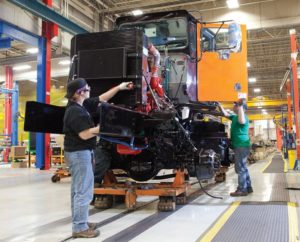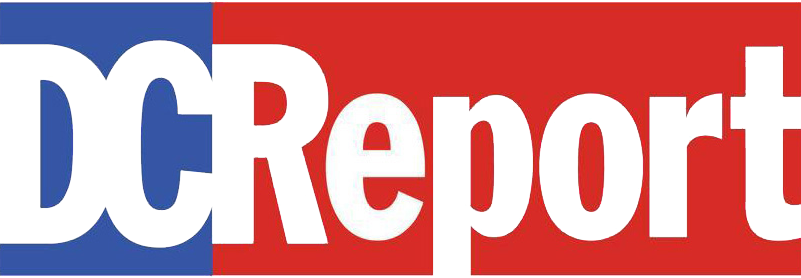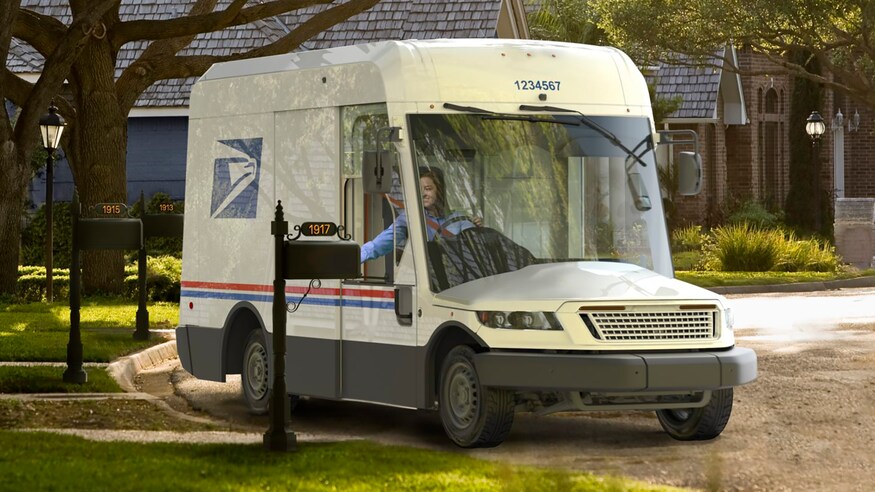Of the 165,000 Vehicles on Order, Only 10% Will Be Electric. Then, There’s the Issue of Building Them with Foreign-Made Parts.
The multibillion-dollar deal for the shiny new fleet of battery-powered U.S. Postal Service vehicles could be a missed opportunity for addressing climate change and strengthening American manufacturing.
The USPS awarded the 10-year, multibillion-dollar deal to Oshkosh Defense, an American military contractor based in Wisconsin.
As part of the deal, the USPS will make a $482 million advance payment to Oshkosh to complete its vehicle design and build-out and tool a manufacturing plant for the project. That’s good news for the parent company whose debt has the lowest corporate bond rating from Moody’s, just one step above junk bonds.
Oshkosh originally joined with Ford Motor Co. on its proposal, submitting an early prototype based on a Ford Transit van. But Ford’s name is missing from the contract announcements and both Oshkosh and Ford declined to comment on Ford’s role in sealing the deal and fulfilling the contract. That’s odd given Ford’s commitment to becoming an EV, or Electric Vehicle, company.
The full contract price has not been revealed, though it’s estimated to be between $4.5 billion and $6.3 billion to procure a new fleet. And it could be well above that depending on the cost per vehicle.
According to Government Executive Magazine, in the initial request for information documents, USPS expected to pay $25,000 to $30,000 per vehicle, which seems astoundingly low, considering the custom specifications.
Underbidding to win a contract and then when the government is committed to submitting demands for much more is, of course, an old trick by military contractors.
ACTION BOX/ What You Can Do About It
Contact the USPS and demand it buy American parts for the new trucks and increase its quota of electric vehicles. Tweet @USPS; go to its Facebook page; Instagram page; or send an email.
Contact your representatives and senators and demand they push for a green fleet made with American parts and labor.
Over a decade, Oshkosh will deliver up to 165,000 modern mail delivery vehicles, complete with bells and whistles like the air conditioning and airbags lacking in the 30-year-old jalopies sputtering through your neighborhood today.
Gasoline Engines

Despite the Biden administration’s push for a green energy future, only a 10th of the trucks will be electric.
The rest will burn gasoline, though they are designed so that the traditional fossil fuel engines can be replaced with electric motors and batteries later. That may just be an empty promise to curb criticism as retrofitting gas trucks to be electric sounds like an unnecessary expense when the vehicles could be delivered as electric from the get-go.
An all-electric fleet was proposed by a small domestic electric vehicle company, Workhorse Group, in Loveland, Ohio. Workhorse became a Wall Street darling as its stock grew from $2 in March 2020 to about $40 in February. It built prototypes. But USPS expressed concerns about whether a company with only 150 employees could tackle a purchase order of this magnitude.
There’s another troubling aspect to the deal with Oshkosh Defense. Though the USPS selected an experienced American firm, the contract requires only that final vehicle assembly take place in the United States. That means Oshkosh can procure parts from international manufacturers instead of buying American.
‘Global Purchasing Capabilities’
And that’s just how Oshkosh seems to do business. According to its 2020 annual report, the contractor does not have a buy-American strategy. Instead “many costly components such as chassis, engines and transmissions” for the vehicles it manufactures are purchased by utilizing “strategic global purchasing capabilities.”
Oshkosh Defense is a $2.2 billion subsidiary of Oshkosh Corporate, which pulled in $6.8 billion in revenue in 2020 from various sectors of vehicle manufacturing from fire trucks to concrete mixers to garbage trucks. That’s down from a total of $8.4 billion in fiscal year 2019.
Zach Mottl, head of the Coalition for a Prosperous America (CPA), which advocates for balanced trade and more domestic manufacturing, expressed concerns:
“Postal service procurement offers a tremendous opportunity to strengthen America’s automotive and electric vehicle supply chains.
“It would be a tragedy if postal vehicles were primarily made in Mexico or China, even if the assembly takes place here. CPA member companies and other manufacturers should be called upon to provide electric motors, batteries, chassis, and other components.”
Not Bound by Fed Rules

The USPS enjoys greater flexibility than other federal agencies to buy only American-made products. It does not have to follow the stipulations of international trade agreements where imported goods are treated the same as American-made products.
And there’s the added incentive of President Joe Biden’s initiative to strengthen American supply chains. Biden signed an executive order last week to rebuild domestic manufacturing capacity and create more jobs. But Biden does not have direct control over USPS, a government-sponsored corporation rather than a government agency like the old Post Office Department, which had been a Cabinet-level agency.
DeJoy Strikes Again
The modernization of the USPS vehicle fleet surely will add jobs and help the manufacturing economy, but it could do much more under the right leadership.
Postmaster General and CEO Louis DeJoy* is known for dangerously trying to manipulate the election with misinformation about mail-in votes.
While Trump touted an America-first policy, he did nothing to help American manufacturing. For example, from when Trump assumed office through the pre-pandemic year of 2019 exports of American goods to China fell 8.5%.
The irony is that Biden is taking steps to increase American manufacturing – less than two months in office. It’s unclear if DeJoy will work to match Biden’s agendas.
Few Electric Trucks

Another pain point of the new mail-truck deal is only 10% of the vehicles will be electric, a fact left out of the USPS announcement.
That any trucks would have gasoline engines emerged only when DeJoy was questioned at a House Oversight and Reform Committee hearing after the announcement. Biden wants to move the entire fleet of government vehicles to electric power as part of his sweeping climate agenda.
When asked why the numbers aren’t reversed, with 90% of the new postal trucks being electric, DeJoy cited a lack of funds. He said if Congress or Biden wanted to give the USPS $3 billion to $4 billion, it could be done.
That would be a significant policy issue because USPS does not receive any taxpayer monies. It operates wholly on money earned from the sale of postage, products and services. Given Detroit’s rapid move toward EVs and the fact that the losing American bidder would only make EVs, DeJoy’s figures seem difficult to believe.
A contract for mostly, and perhaps only, gasoline-powered trucks represents another missed opportunity – this time to help the planet. The gas-powered vehicles could be converted down the road, however, or at least that is what DeJoy says though its hard to imagine it actually happening.
At least the new trucks will get better gas mileage than the current Grumman dinosaurs, which average around eight mpg.
“Our fleet modernization also reflects the Postal Service’s commitment to a more environmentally sustainable mix of vehicles,” DeJoy said in a statement. “Because we operate one of the largest civilian government fleets in the world, we are committed to pursuing near-term and long-term opportunities to reduce our impact on the environment.”
More ‘Fuel-Efficient’
The USPS says the new trucks will be “fuel-efficient low-emission” but has provided no specifics like mpg for fuel consumption while idling.
“It’s disappointing that [the USPS contract] announcement does not immediately commit to electrifying one of our nation’s largest vehicle fleets,” Robbie Diamond, the CEO of nonprofit Securing America’s Future Energy, said in a statement.
“This contract is a golden opportunity to stimulate the domestic EV market and supply chain, and a commitment to electrifying the [postal fleet] would provide a clear incentive for further domestic EV industry development along the entire supply chain, from minerals to markets.”
The USPS operates some 230,000 vehicles, with 190,000 trucks delivering mail six or seven days a week. They are a mix of purpose-built and commercial-off-the-lot vehicles, as the new fleet will be. The new vehicles—dubbed the Next Generation Delivery Vehicles, or NGDVs—will replace the gas-guzzling Grumman LLVs (long-life vehicles), which were intended to be junked after 24 years. The oldest have been on the road since 1987, some 34 years ago. The newest were built in 1994.
Oshkosh, which initially teamed up with Ford in the bidding process, has yet to complete the design for the specialized right-hand-drive vehicles. That raises questions about whether it had the financial resources to finish the design work without the upfront infusion of cash from USPS.
But the company does have some experience building hybrid vehicles; its product offering includes a hybrid diesel-electric system. We couldn’t find, however, any purely electric vehicle in its fleet of military and commercial offerings.
Assuming all goes well, the new vehicles will begin delivering mail in 2023, bearing fruit after a solicitation process going back to 2015, which began with 15 pre-qualified bidders. Initial contenders included Fiat Chrysler and Nissan. The bidding process had several hiccups along the way, from faulty prototypes to pandemic delays.
But the delivery of mail trucks may be further delayed. Should Workhorse Group, the Ohio electric vehicle startup company, appeal the selection of Oshkosh, expect further delays in getting new trucks no matter what kind of motors power them. Workhorse has asked for more information from the USPS on the selection of Oshkosh.
“The company intends to explore all avenues that are available to non-awarded finalists in a government bidding process,” Workhorse said in a statement.
Featured image: The proposed new USPS mail carrier vehicle.
*Correction: Postmaster General Louis DeJoy was hired by the board of governors of the U.S. Postal Service, members of which are nominated by the president and confirmed by the Senate. DeJoy was erroneously identified as a Trump appointee in an earlier version of this story.





